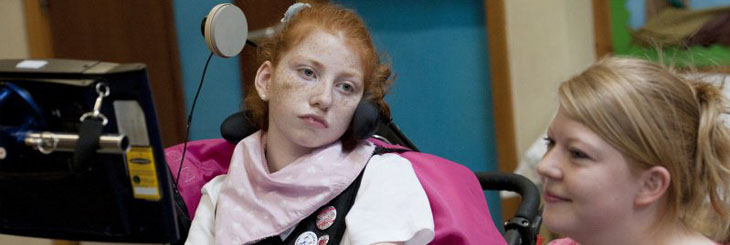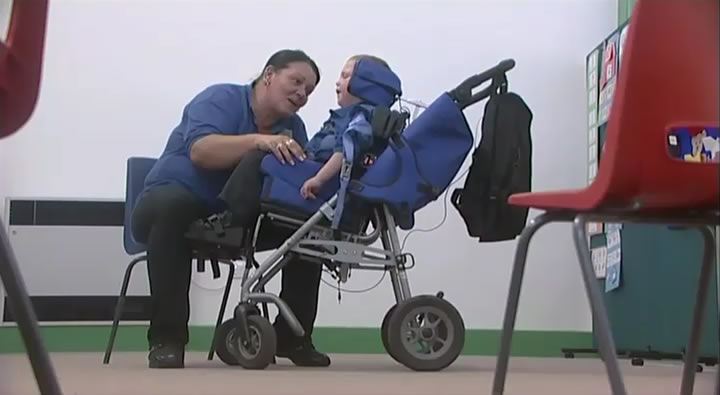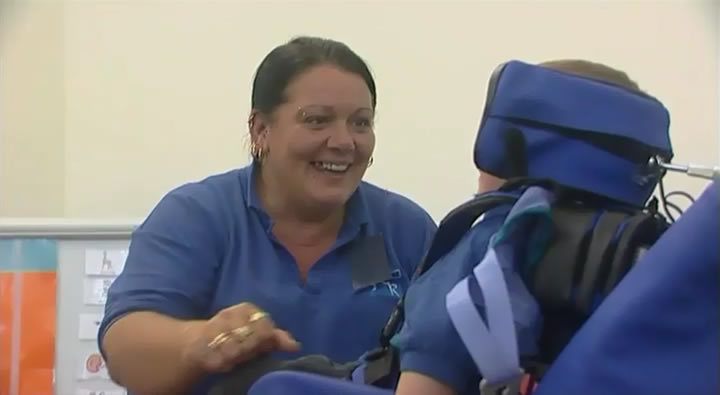Introduction

- All children communicate in a number of ways:
- they communicate through their speech
- they use non-verbal communication, for example through their posture and facial expressions.
- Some of this may be intentional and some of it may be unintentional - especially if they are adolescents.
- If you look closely enough at any child with complex disabilities, you will understand they are also communicating. They may not be using speech, or at least not complex sentences, but they will be communicating non-verbally, both intentionally and unintentionally, how they are feeling and what they want.
Communication and complex disabilities
Watch, Callum, a child with complex needs communicating with Lesley, a teaching assistant.
How is Callum communicating?
Look at the following areas:
- Speech
- Other vocalisations
- Head movements
- Facial expressions
- Tongue activity
- Eye contact
- Hand and arm movements.
Callum has no speech but he communicates using sounds, facial expressions, eye-contact, and arm and hand movements.
Response and intention

What a child does in response to what is going on around them is always communication.
A child with complex needs will communicate unintentionally before they can communicate intentionally.

